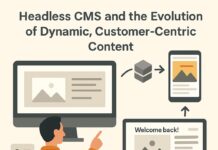The vendor demo always looks fantastic. The sales engineer opens the software, clicks through a polished example, and everything works beautifully. Requirements flow seamlessly into design elements. Reports generate instantly. The interface looks intuitive. Management sees the potential and signs the contract, expecting similar results once the software rolls out across the organization.
Then reality hits. Six months later, adoption is patchy at best. Half the team still uses the old tools because the new system is “too complicated.” The IT department is struggling with server capacity issues. Files that should take seconds to open are timing out. And somehow, despite expensive licenses and implementation consulting, nobody seems to be getting the productivity gains that justified the purchase.
This pattern repeats constantly in engineering organizations. The gap between what enterprise software promises and what it actually delivers has less to do with the software itself and more to do with everything that happens around it.
The Infrastructure Nobody Budgeted For
Enterprise engineering software doesn’t run on a laptop the way productivity apps do. These are heavy applications that need serious computing resources. Models with thousands of elements, complex simulations, and detailed visualizations all demand processing power, memory, and storage that typical business computers don’t have.
Most organizations underestimate this during procurement. They budget for licenses but forget about the hardware upgrades, server infrastructure, and network capacity needed to actually run the software effectively. Then engineers start complaining that the system is slow, files won’t load, or the application crashes when working with realistically sized models.
This is where it gets expensive in ways nobody anticipated. Upgrading workstations across an engineering department costs real money. Setting up dedicated servers with proper backup systems and redundancy adds more. If the organization has multiple sites, network bandwidth between locations becomes critical because engineers need to access shared model repositories. That might mean upgrading internet connections or setting up VPN infrastructure that can handle the data loads.
IT departments often get blindsided by these requirements because they weren’t involved early enough in the procurement process. Engineering management sees a technical solution to engineering problems and doesn’t think about the infrastructure layer until deployment starts failing. By then, rolling back isn’t really an option because contracts are signed and money is spent.
The Training Gap That Kills Adoption
Vendor training is usually part of the implementation package, but it’s rarely sufficient for actual proficiency. A typical arrangement might be a few days of classroom training covering basic operations and key features. This gives people enough knowledge to navigate the interface and complete simple tasks, but not enough to handle the complex workflows that real projects demand.
The problem is that software training alone doesn’t address methodology. Engineers might learn where the buttons are and how to create different diagram types, but understanding when to use which approach and how to structure models effectively requires deeper knowledge. Resources such as catia magic training can help bridge this gap, but organizations often underestimate how much ongoing education is needed beyond initial deployment.
What happens in practice is that a few people become power users through combination of aptitude, interest, and necessity. Everyone else develops workarounds, uses the software minimally, or continues with old methods while technically “using” the new system. The organization ends up with expensive software that’s underutilized because the investment in training didn’t match the investment in licenses.
When Old Processes Meet New Tools
Engineering organizations have established workflows that developed over years or decades. These processes are embedded in everything from how projects are structured to how deliverables are formatted to who approves what at which stage. New software doesn’t automatically fit into these existing patterns.
Some organizations try to force the new tools to replicate old workflows exactly. This usually fails because the software was designed around different process assumptions. Features don’t quite line up with how things were done before. Reports don’t match existing templates. Approval chains that worked with document-based systems don’t translate cleanly to model-based approaches.
Other organizations try to redesign their entire process to match the software vendor’s recommended approach. This is theoretically better but practically difficult. Process changes require buy-in from multiple stakeholders, updates to quality procedures, and retraining on workflows not just tools. Resistance builds quickly when people feel like they’re being forced to work differently just because someone bought new software.
The middle path, customizing both the software configuration and the processes to meet somewhere reasonable, requires expertise that most organizations don’t have internally. Implementation consultants can help but they’re expensive and their knowledge leaves when the engagement ends. Building internal expertise takes time that project schedules rarely accommodate.
The Data Migration Nightmare
Existing projects don’t pause while new software gets deployed. There’s usually a backlog of active work that needs to continue, which means data from old systems needs to move into new ones. This is rarely straightforward.
Different tools structure information differently. What was a requirement in the old system might need to split across multiple elements in the new one. Relationships between components that were implicit or documented informally need to become explicit. File formats don’t translate cleanly, if they translate at all.
Organizations have a few bad options here. They can try to migrate everything, which is time-consuming and error-prone. They can run parallel systems for a transition period, which means maintaining two sets of tools and dealing with synchronization issues. Or they can draw a line where old projects stay in old tools and only new projects use the new system, which creates a long tail of legacy tool support.
None of these options are appealing, and all of them cost more than anyone expects. The data migration workload often becomes the bottleneck that delays actual productive use of the new software by months.
The Customization Trap
Out of the box, enterprise software tries to serve many industries and use cases. This means it includes features most organizations don’t need and might lack features specific workflows require. Customization seems like an obvious solution, but it creates long-term problems.
Custom configurations and plugins need maintenance. Every time the software vendor releases an update, customizations might break. Someone needs to test compatibility, update custom code if necessary, and validate that everything still works. This ongoing maintenance burden often isn’t clear during initial implementation.
Heavy customization also creates vendor lock-in and knowledge silos. The organization becomes dependent on the specific people who understand the custom configuration. If they leave, institutional knowledge walks out the door. Migrating to different software becomes nearly impossible because processes are built around customizations rather than standard features.
What Actually Works
Organizations that navigate these challenges successfully usually share some patterns. They involve IT infrastructure planning early, not as an afterthought. They budget realistically for ongoing training beyond initial deployment. They accept that process changes are part of tool changes and plan for both.
They also tend to phase rollouts carefully. Instead of flipping an entire organization to new software simultaneously, they pick pilot projects or teams. This lets them work through problems on a smaller scale, develop internal expertise, and demonstrate value before broader deployment.
The timeline expectations matter too. Treating enterprise software implementation as a quarter-long project sets everyone up for disappointment. Real adoption, where the tool becomes integral to how work gets done rather than an obligation people resent, takes years not months. Budget, staffing, and management patience need to reflect that reality.
Enterprise software can deliver real value for engineering organizations dealing with complexity that simpler tools can’t handle. But the gap between purchase and productive use is filled with challenges that vendor demos gloss over and procurement processes underestimate. Success depends less on picking the perfect tool and more on preparing properly for everything that comes after the contract signature.








